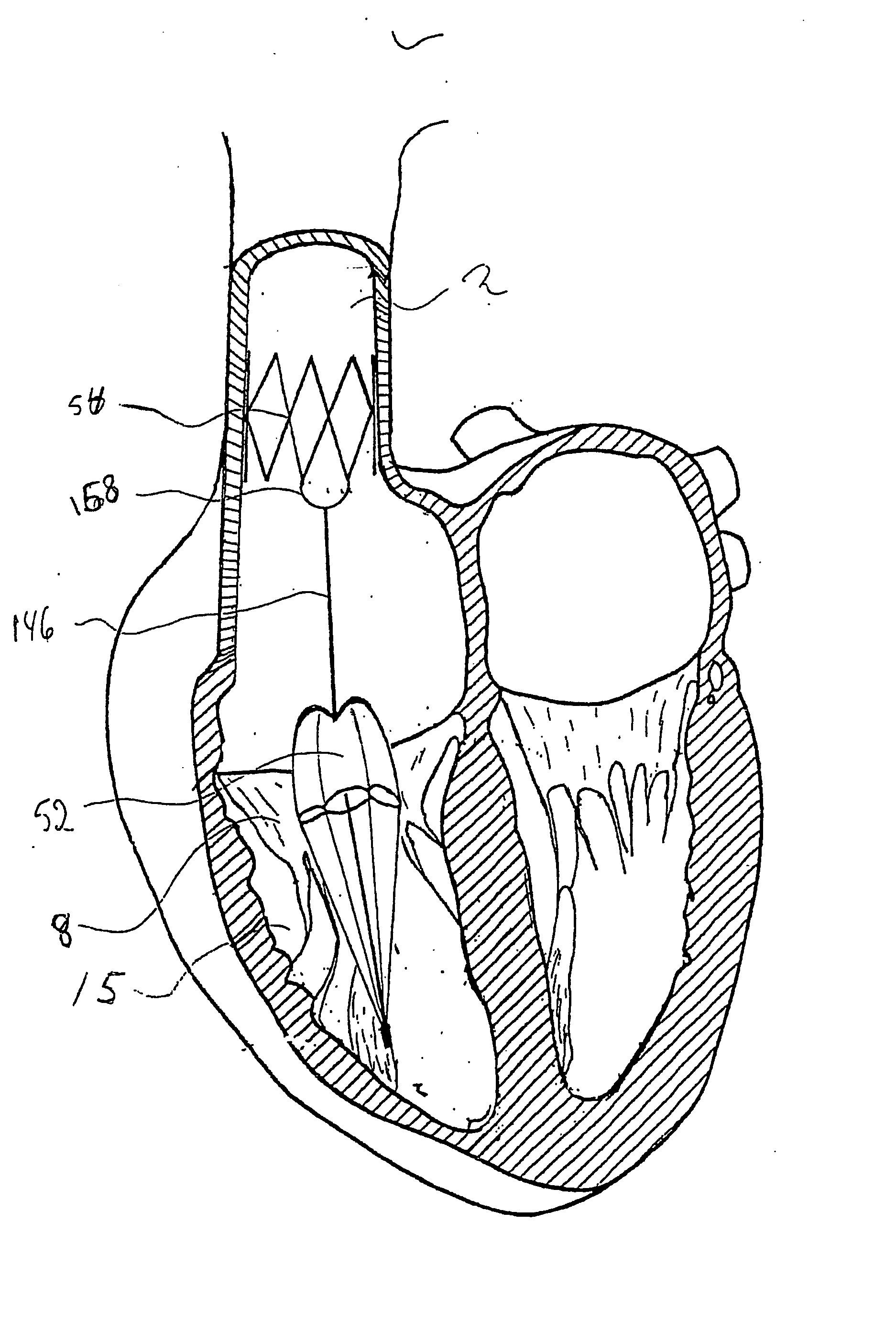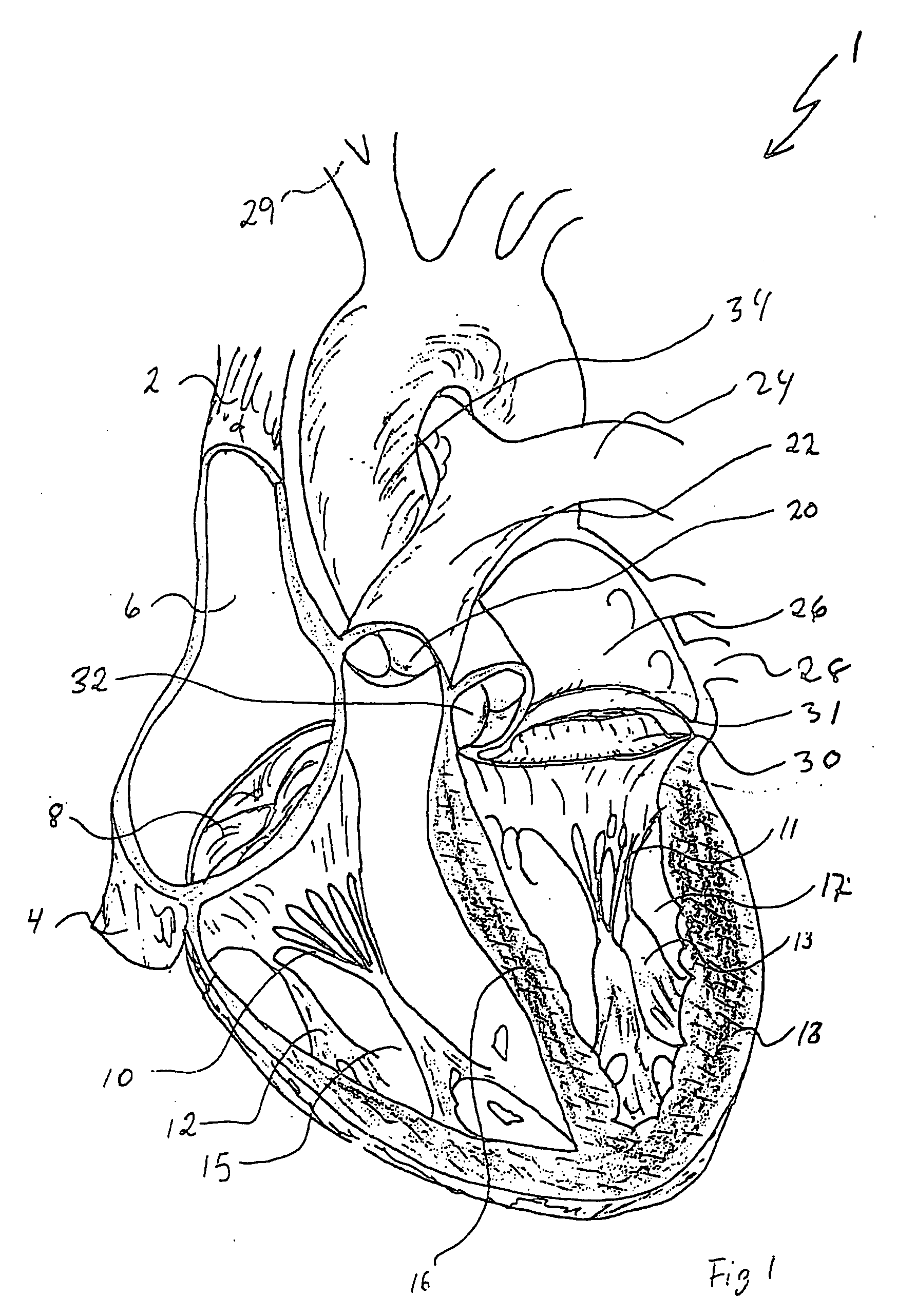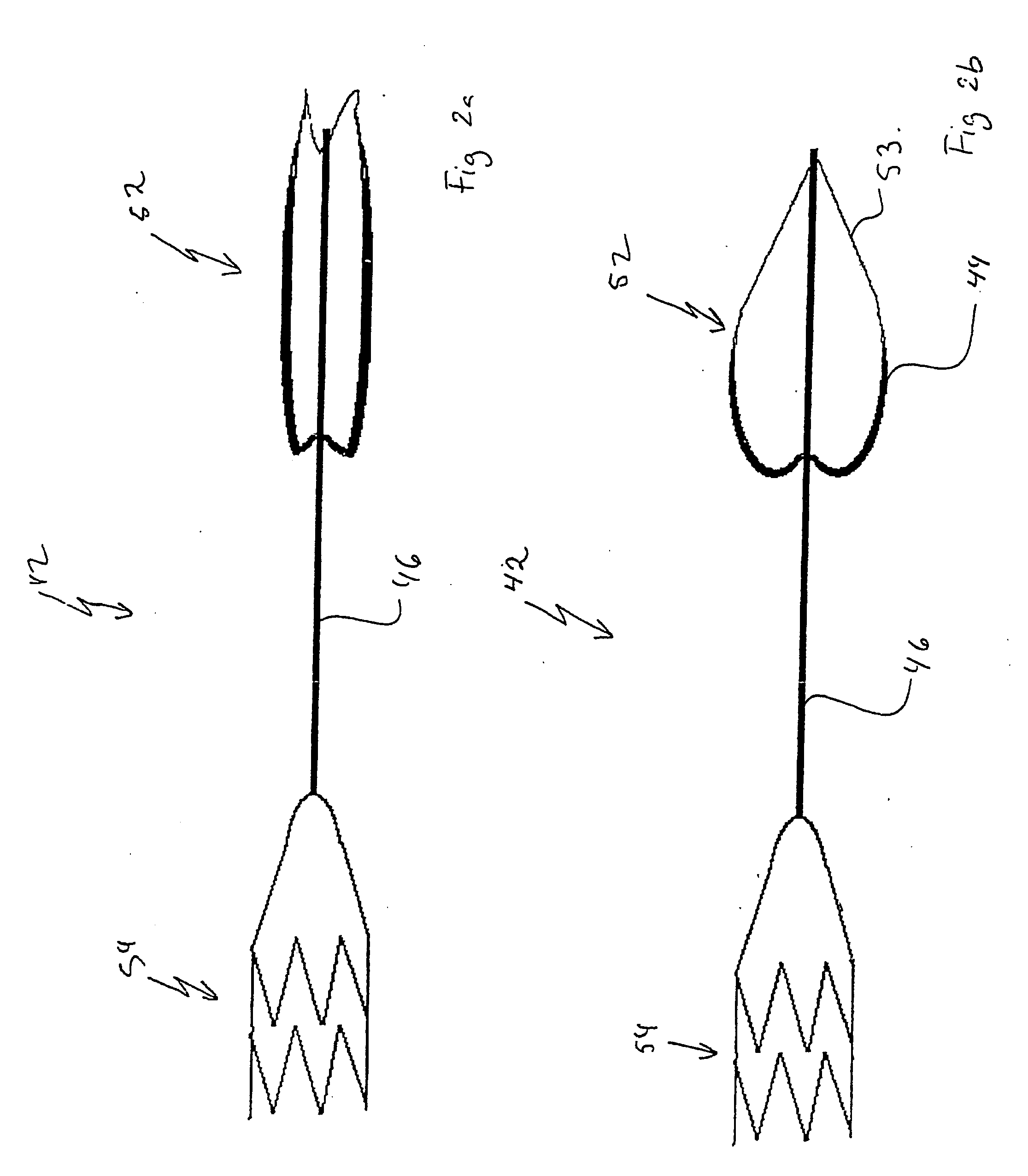Blood flow controlling apparatus
a technology of controlling apparatus and flow, applied in the field of blood flow control apparatus, can solve the problems of leakage of valve valve, high risk of open heart surgery, and very common heart valve diseas
- Summary
- Abstract
- Description
- Claims
- Application Information
AI Technical Summary
Benefits of technology
Problems solved by technology
Method used
Image
Examples
first embodiment
[0105] shown in FIG. 6a, the valve means 52 comprises a flap 44 which symmetrically encircles the connecting means 46. The flap 44 is attached to the connecting means 46 around its entire circumference in a longitudinal attachment point 90 forming a fluidtight attachment around the connecting means 46. The flap 44 is hinged in the attachment point 90 such that it is moveable between an open position where it extends mainly along the connecting means 46 and a closed position, as shown in FIG. 6a, where it extends in a mainly transverse direction to the connecting means 46. The flap 44 has a contact surface 92 which faces the forward flow in the native heart valve or the vessel and which is arranged to contact the leaflets of the native heart valve or the vessel wall in the closed position of the flap 44. When moving into the closed position, the flap 44 will move towards increasingly extending in a transverse direction to the connecting means 46. The contact surface 92 will then com...
third embodiment
[0109] In the third embodiment shown in FIG. 6c, the valve means 252 comprises several flaps 244. The flaps 244 are attached to a common attachment position 290 around the connecting means 46. Each flap 244 has a contact surface 292 with a coaptation area 294 and the flap 244 is moveable to put the coaptation area 294 of the contact surface 292 in contact with the leaflets of the native heart valve or the vessel wall. The flaps 244 are broadening towards the coaptation area 294. Further, the flaps 244 are overlapping and arranged as the leaves of a hibiscus flower so as to form a tight seal between them when extending to make contact with the heart valve or the vessel wall. The flaps 244 further have a strengthened base 296 close to the attachment position 290. The strengthened base 296 will prevent the flap 244 from turning over due to backflow in the heart valve or the vessel.
fourth embodiment
[0110] In the fourth embodiment shown in FIGS. 7a-d, the valve means 352 comprises several flaps 344 which are arranged side-by-side encircling the connecting means 46. As indicated in FIG. 7c showing a perspective view of the valve means 352, each flap 344 comprises a contact surface 392 with a coaptation area 394. The flaps 344 are wedge-formed with the narrow end towards the connecting means 46 and the broad end arranged to make contact with the native heart valve or the vessel wall. As indicated in FIG. 7a showing a cross section of the valve means 352 when inserted in a native heart valve or a vessel, adjacent flaps 344 extend along each other and are arranged close together such that adjacent surfaces present respective coaptation areas 392, which will be in close contact with each other to prevent leakage between the flaps 344. In FIG. 7a, the valve means 352 is depicted in the closed position in which it is arranged to make contact with the native heart valve or a vessel wal...
PUM
 Login to View More
Login to View More Abstract
Description
Claims
Application Information
 Login to View More
Login to View More - R&D
- Intellectual Property
- Life Sciences
- Materials
- Tech Scout
- Unparalleled Data Quality
- Higher Quality Content
- 60% Fewer Hallucinations
Browse by: Latest US Patents, China's latest patents, Technical Efficacy Thesaurus, Application Domain, Technology Topic, Popular Technical Reports.
© 2025 PatSnap. All rights reserved.Legal|Privacy policy|Modern Slavery Act Transparency Statement|Sitemap|About US| Contact US: help@patsnap.com



